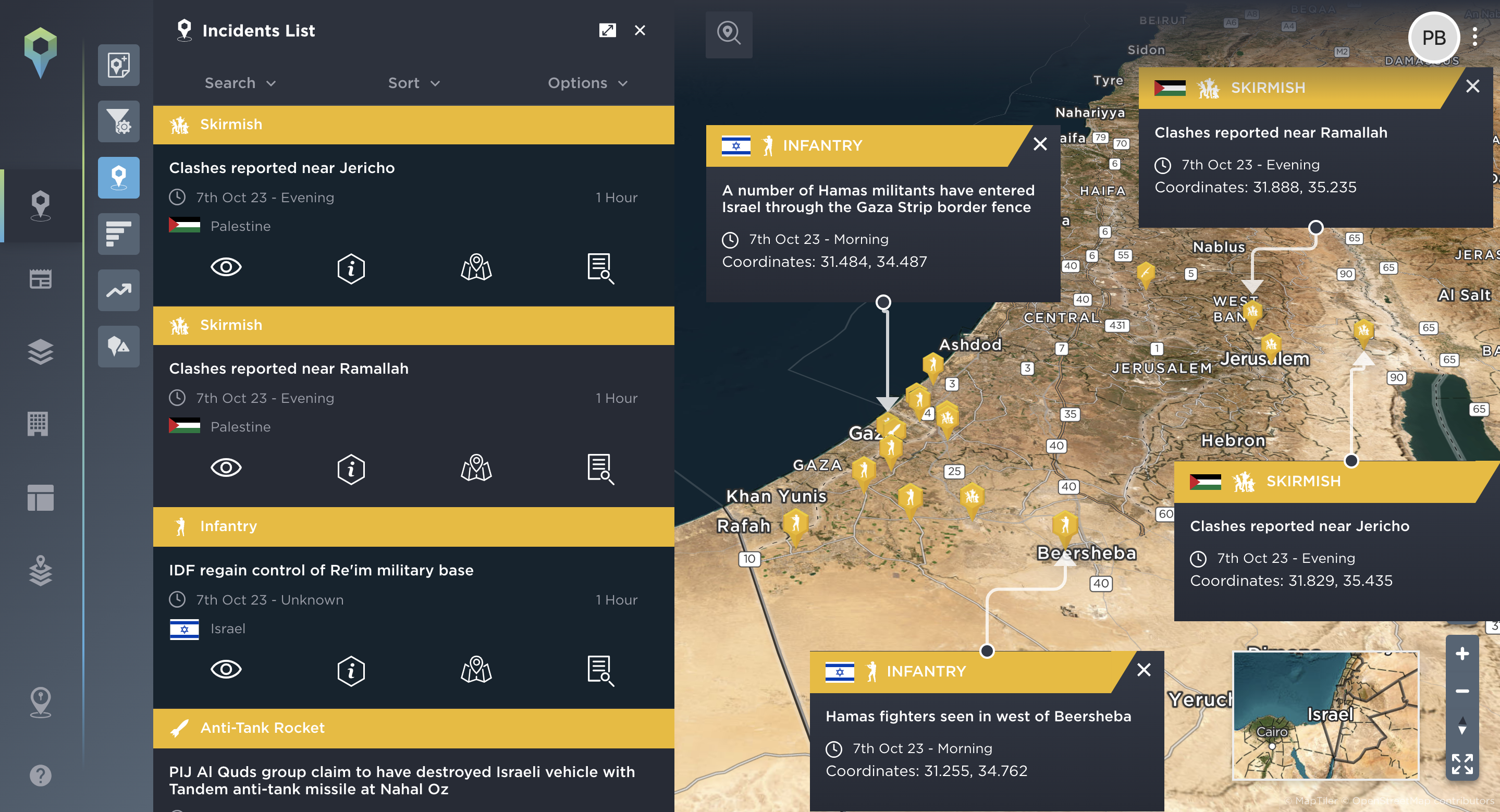Evaluating the EU’s stance towards the Israel-Palestine conflict
How has the EU responded to the latest escalation in the Israel-Palestine conflict, how does this compare to its existing stance, and how does it differ from the response of its population?
Due to its role as a political-economic union representing 27 member states, the European Union (EU) situates itself as one of the largest and most influential actors on the world stage. Far from being limited to policies concerning Europe alone, it is an active stakeholder in events beyond its borders. The emergence of the Israeli-Hamas conflict is no exception, and one that tests the EU’s overall stance towards the conflict while revealing its strengths and weaknesses. The purpose of this blog is to delineate these factors and their significance for the EU and its relevance and future, and what this could mean for its own stakeholders. This includes its member states or its various investors, both public and private. In addition, it will use a levels of analysis approach to showcase the distinction between the EU’s official positions and the sentiments of its officials and populace, as shown by Intelligence Fusion’s platform.
What has been the EU’s past positions towards the Israel and Palestine issue?
Historically, the EU has been a long supporter in recognising the self-determination of both Israel and Palestine. In its previous existence as the European Economic Community (EEC), it first recognised the rights of self-determination of the Palestinian people in 1980. In the late 1990s, it deliberated and conceived a vision for a two-state solution between both communities. As a member of the Middle East Quartet along with the United States, Russia and the United Nations, it continued to develop towards this vision in accordance with the 2003 Roadmap for Peace.
The EU remains committed to both states in serving their respective economic and humanitarian needs. Presently, it is both Israel’s biggest trading partner and Palestine’s biggest donor. In 2023—prior to the Hamas attack against Israel on the 7th October—the EU donated €28 million in humanitarian funding for Palestinians. This only proliferated within the escalating conflict, donating an additional €50 million in response – nearly double its original donations this year.
The EU thus serves as peacekeeper for both states in its respective roles as an important economic partner for Israel and a humanitarian backer for Palestine. Yet this role, while seeking to accommodate peace and prosperity for both nations, has been interpreted as ‘sitting on the fence’ by critics. The contradictions in aiding both sides have caused it to have an inadvertent lack of unity between its officials and member states towards the conflict.
Response by officials of the EU and its member states
In the immediate aftermath of the Hamas attack against Israel, several leaders of the EU’s member states condemned the incident. This is in accordance with the ‘road map for peace’ proposed by the EU and its fellow members of the Middle East Quartet. Original member states of the EU since its first conception have been vocal in their desire to stop Hamas and its actions. In his meeting in Israel with Prime Minister Netanyahu on the 24th October, French President Emmanuel Macron called for an international coalition to fight Hamas in support of Israel. In Germany, the Interior Minister Nancy Faeser suggested that Hamas supporters should be deported from the country where possible. This mutual sentiment towards Hamas and its actions extends to the EU’s newer members— with the Hungarian parliament condemning the attacks as terrorism in a parliamentary vote.
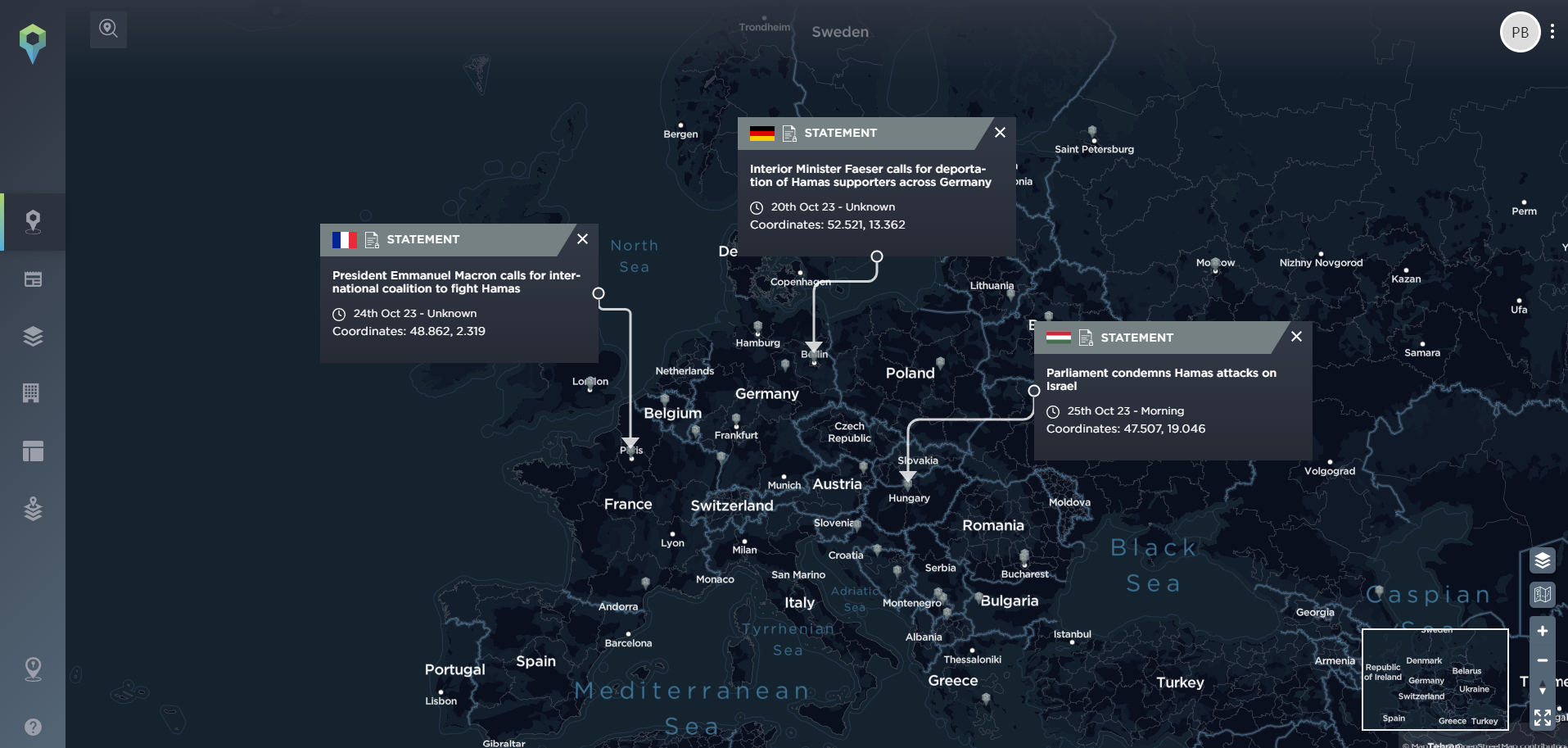
Political responses by EU governments to the Israel-Palestine conflict [image source: Intelligence Fusion]
This general condemnation of Hamas as a terrorist outfit has been openly expressed by high-ranking EU officials themselves. Josep Borrell, the High Representative of the European Union for Foreign Affairs and Security Policy, referred to the 7th October incident as an ’appalling terrorist attack against Israel … If confirmation was needed that Hamas is a terrorist organization, its recent actions provide it’. At the same time, the EU is careful to make a clear distinction between Hamas and the Palestinian people it seeks to support via aid. Borrell also argues that ‘Hamas shouldn’t be confused with the Palestinian people and the civilian population of Gaza cannot be held collectively responsible for its criminal actions’. The EU and its member state thus collectively stands to support both Israel and Palestine while actively condemning Hamas as a terrorist group. Doing so is a two-pronged approach. It protects its economic interests with Israel as a trading partner. At the same time, it maintains its appearance of being a humanitarian benefactor to the well-being of the Palestinian people.
However, the EU’s attempts to mitigate the risk of appearing to support either Israel or Palestine alone has been harder in practice. The European Commission President, Ursula von der Leyen, has been among those struggling to represent the EU’s official position. In a speech at the Hudson Institute on the 19th October, von der Leyen reiterated the EU’s support for Israel’s right to defend itself. However, she was criticised for failing to mention the EU’s position to support the Palestinian’s right to self-determination and a two-state solution. This criticism was from EU officials themselves. In response to the speech, 798 EU staff members wrote a letter openly against von der Leyen’s alleged bias towards Israel. More specifically, the views of high-ranking EU officials such as Borrell—who allegedly has a negative working relationship with von der Leyen—also conflict with the commission president’s, having accused Israel of breaking international law by cutting off water and electricity supplies to civilians in Gaza.
Response by the populations of the EU member states
The EU position towards the Israel-Hamas conflict is not only inconsistent between its official representatives, but also among the populations it represents. Since the start of the conflict, there has been a significant rise in anti-Israel demonstrations across the European continent. Many of these protests being in von der Leyen’s own home state of Germany are an example of this. As shown on the Intelligence Fusion platform, the majority of these have been largely peaceful protests expressing solidarity with Palestine as opposed to Israel, with a smaller proportion of pro-Israel protests also being present.
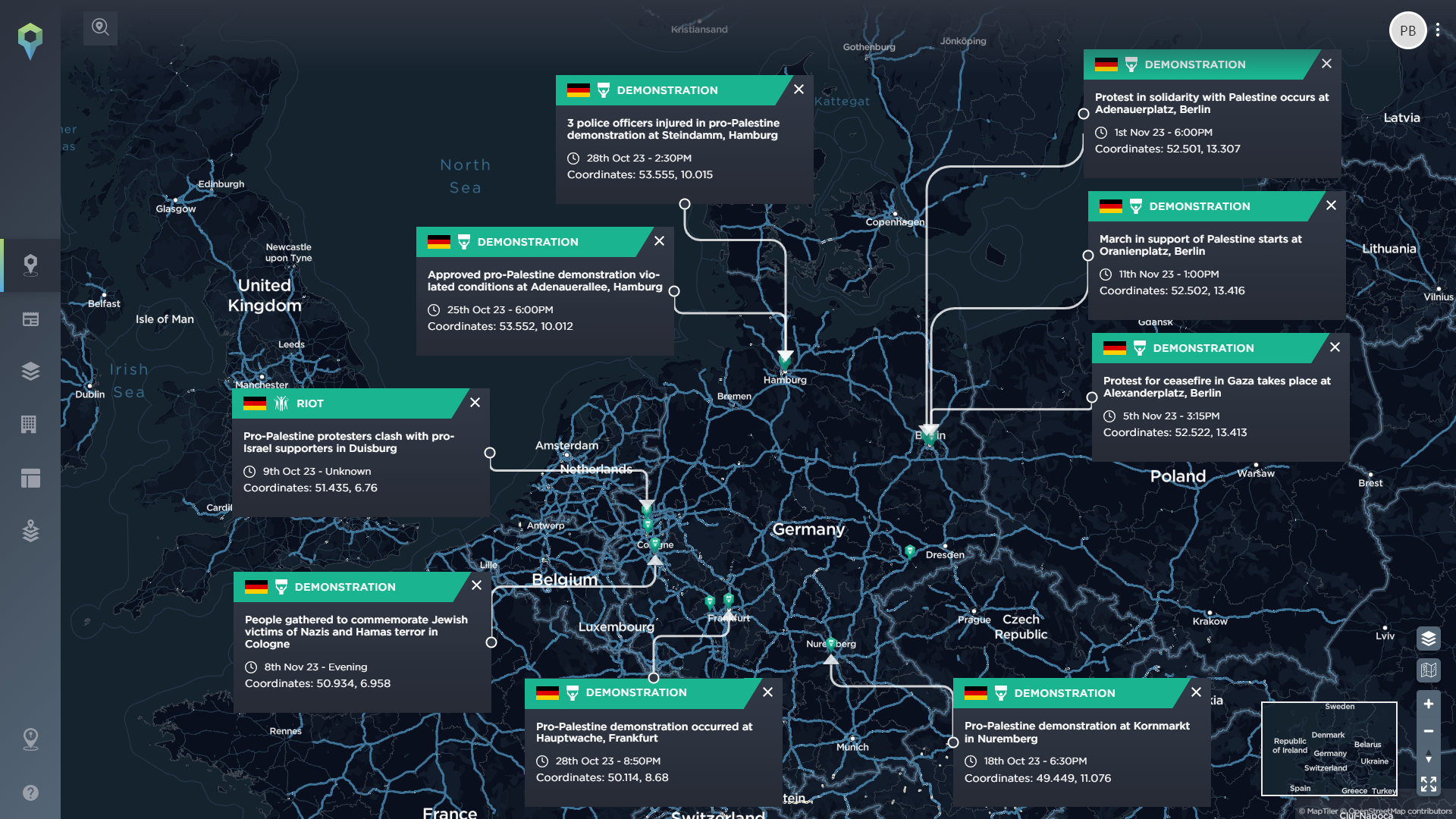
In countries such as Germany, there have been both pro-Palestine and pro-Israel demonstrations [image source: Intelligence Fusion]
Some means of protest are expressed via more extreme means, particularly through vandalism. This often consists of defiling the flag of Israel itself. This is not exclusive to Germany alone, with similar incidents being found across the territories of the EU member states.
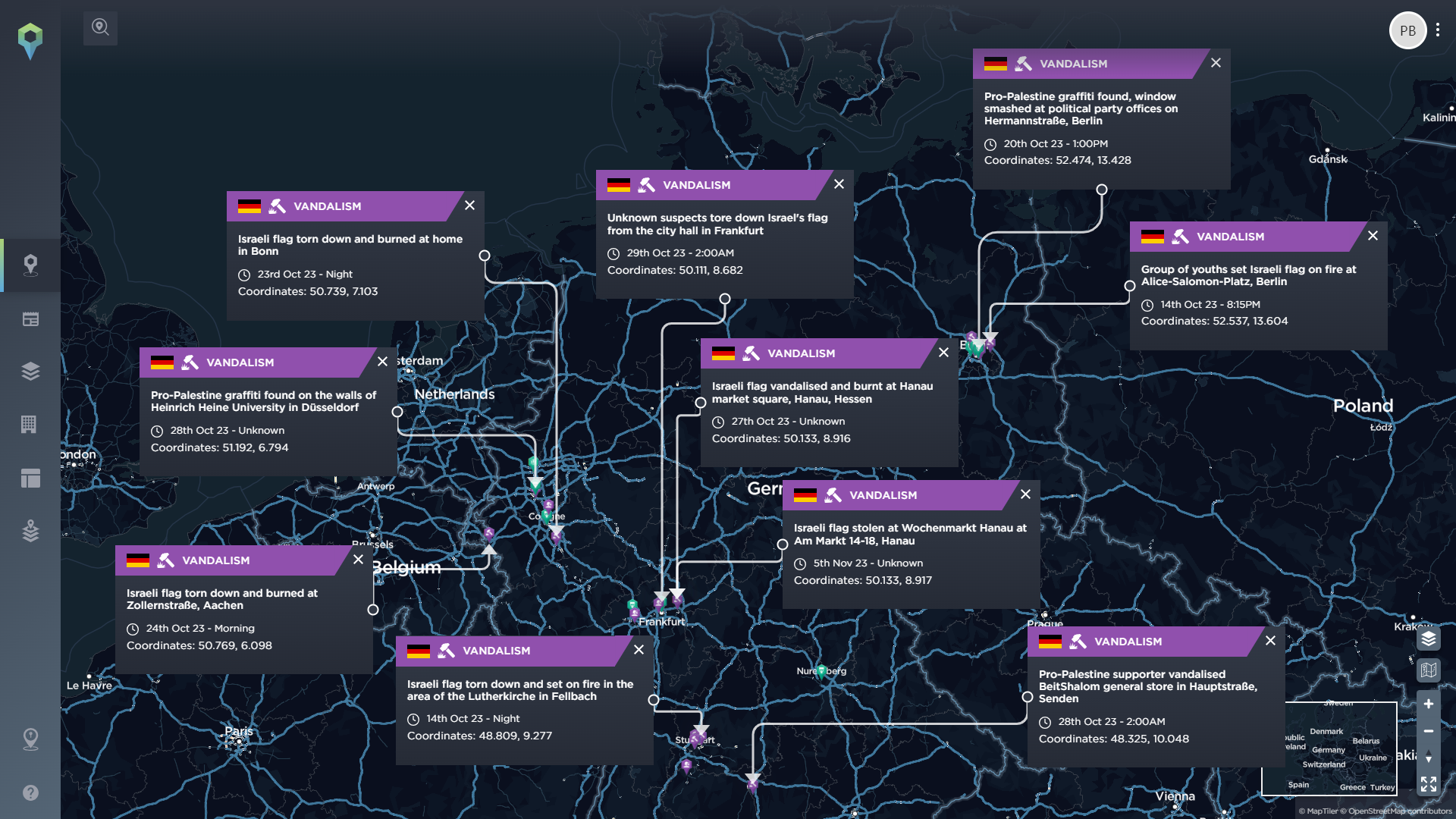
Other forms of protest have involved vandalism, with the defiling of the Israeli flag commonplace [image source: Intelligence Fusion]
By the same token, the growing intensity in feelings towards Israel since the Hamas attack have also dramatically increased public displays of anti-Semitism within Europe. According to the platform’s statistics, the number of anti-Semitic incidents in Europe since the conflict’s beginning have been more than one third than its number of incidents during 2023 pre-war.
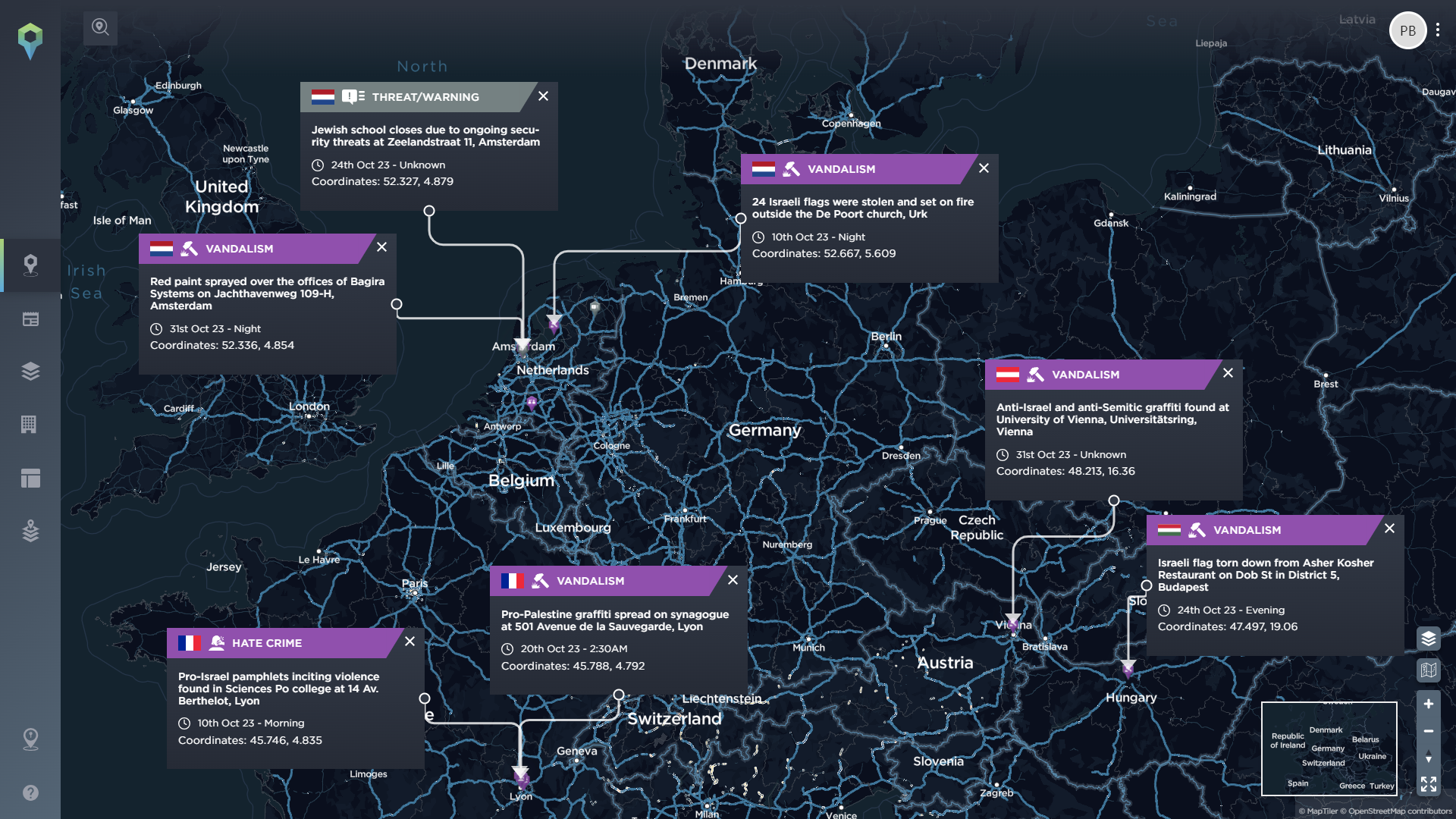
Public displays of antisemitism have also become increasingly frequent since the escalation in the Israel-Palestine conflict [image source: Intelligence Fusion]
This increasing disposition – whether it be merely anti-Israel or anti-Semitic at its most extreme – contrasts with that of the official positions of the leading EU officials and their attempts at impartiality. These incidents also represent potential flashpoints, with instances of clashes between pro-Palestine and pro-Israel protesters already reported on a number of occasions, which, along with confrontational behaviour and instances of anti-Semitic chanting and graffiti, have the potential to escalate into much more severe incidents. Hate crime already appears to have spiked in the month following the latest escalation in the conflict, and the current mix of ethnic and religious tension, political division and heightened emotions may only require one or two isolated incidents to spark serious unrest. This partisan and potentially volatile situation therefore poses a security challenge to member states in addition to the political one they face as the EU looks maintain its impartial stance to the conflict.
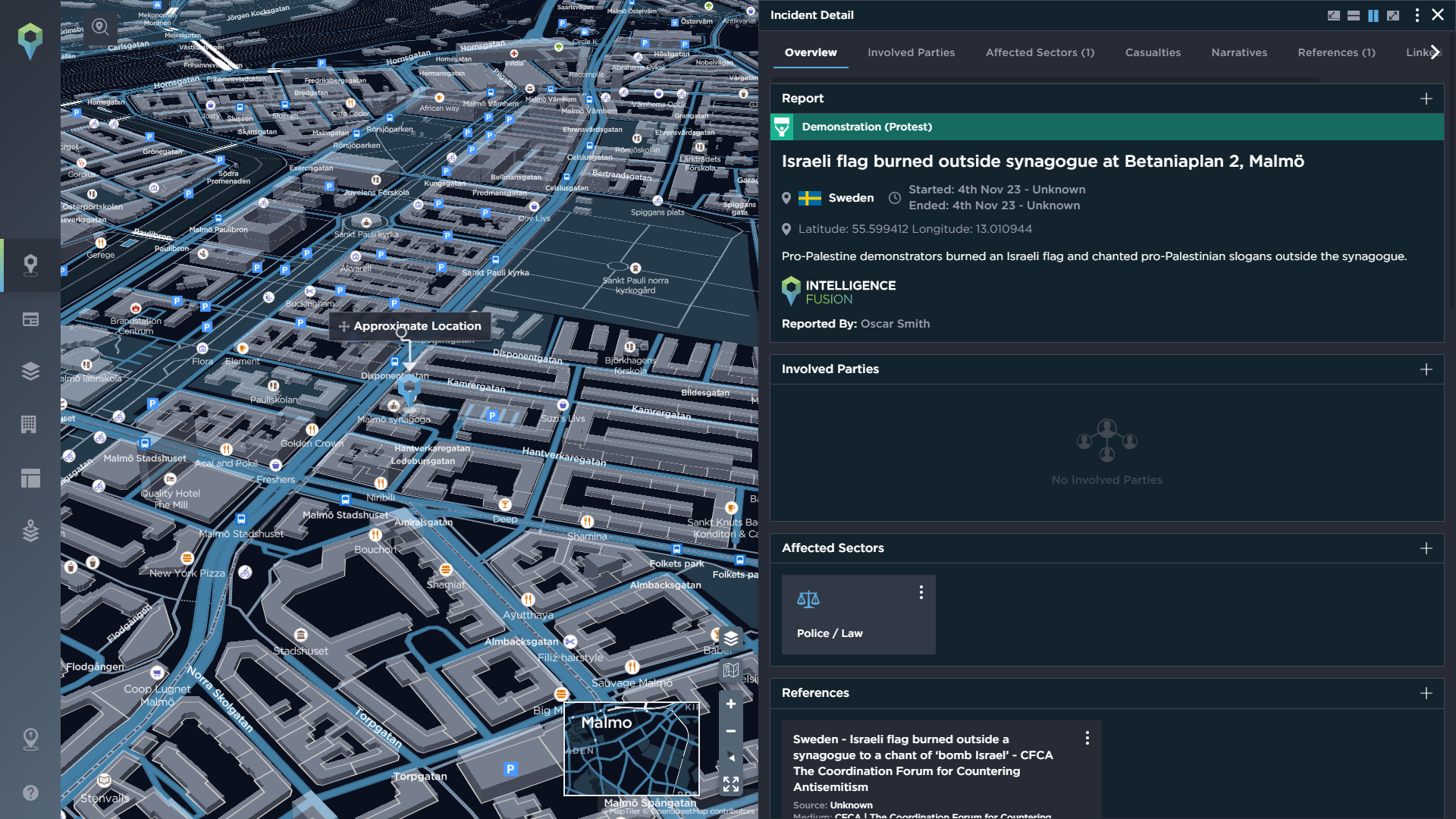
Some demonstrators have targeted synagogues when protesting against Israel [image source: Intelligence Fusion]
The fallout from events in Israel and Palestine continues to provide not just a political headache for the EU, but also a security and disruption threat to the states that make up the Bloc, and the businesses operating within them. Tracking the latest updates and monitoring past activity in the form of historical data allows you to gain an in-depth insight into what’s happening in real time, and an understanding of how similar situations have played out in the past.
By using a comprehensive intelligence system, siphoning events from views becomes easier and more fluid. Rather than relying on statements and publicised doctrines to theorise and determine what will happen next, data and events covered in real-time via our platform allows consumers to comprehend far more than they could without it with its information and resources. This in turn gifts you and your team the ability to judge events with greater certain and to respond accordingly.
If you’d like to learn more about how threat intelligence can help you and your team keep your operations safe and running smoothly, book some time with a member of our team via the form below.

